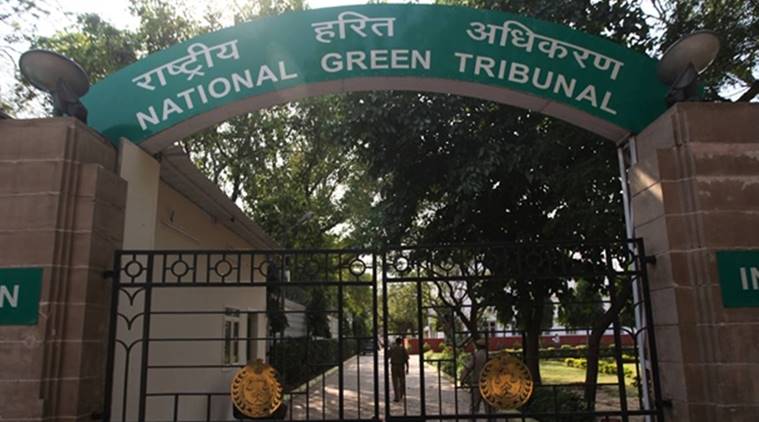Stay updated with the latest - Click here to follow us on Instagram
Farmers should be compensated for soil damage: NGT panel
The team visited six CETPs of which most were non-complying with standards and not achieving zero liquid discharge. “Polluted water flowing in river Bandi is a constant threat for health of villagers and to the agriculture,” the report states.
 The National Green Tribunal office in New Delhi. (Express Photo by Tashi Tobgya/File)
The National Green Tribunal office in New Delhi. (Express Photo by Tashi Tobgya/File)
With wastewater causing “havoc” in “soil productivity” in Rajasthan’s Pali region, a high-powered committee set up by the National Green Tribunal (NGT) to inspect industrial units, several of them textile units, has recommended compensation to farmers based on per unit area loss of money due to deterioration of soil health. A “predominantly green tinge” was present in raw as well as finally discharged effluent into the stream, the committee found.
“There was a distinct agitation among farmers we met who wanted that no wastewater should be allowed to discharge as it was creating havoc with their soil productivity,” the committee’s January 15 report states. “Compensation to farmers may be evaluated by agricultural scientists based on per unit area loss of money due to lesser crop production due to deterioration in soil health,” it recommends. The report notes that farmers present during the visit showed agricultural fields expressing “poor” or “no yield” and also spoke of skin diseases due to contact with the wastewater.
At a time when substantial investments continue to be made to install facilities to treat domestic and industrial wastewater before it enters river systems, the NGT-appointed committee report provides a reality check on an issue that requires serious attention. The report calls into question the status of treatment plants itself, their effectiveness in treating effluents and provides a feedback mechanism before more investments are made to use similar models elsewhere in the country. Running parallel to this is the effect wastewater has on the people and the crops grown in the area.
The NGT had in December, 2018 set up a team of scientists led by Dr Ajit Pratap Singh, dean, BITS Pilani, to visit Pali, its industrial areas, river Bandi, Nehda dam and the Common Effluent Treatment Plants (CETP) in the area. The committee’s findings also show that the entire effluent discharge from the CETP-6 is being discharged into the river Bandi.
The team visited six CETPs of which most were non-complying with standards and not achieving zero liquid discharge. “Polluted water flowing in river Bandi is a constant threat for health of villagers and to the agriculture,” the report states.
Though dyes of many colours are used in the textile industry in Pali, the committee observed a green tinge. It also noted that the total dissolved solids added to the raw water during processing of cloth is much higher at Pali than at Jodhpur. “The strict volumetric discharge limits on industries has perhaps prompted some industries to adopt some measures for reduction in the quantity of water used for processing the cloth,” the report states. “Though it is a good practice, but it results in a more concentrated effluent, which further requires upgrading the treatment strategy.”
“System improvement is imperative to bring viability in an environment friendly way,” it notes.







